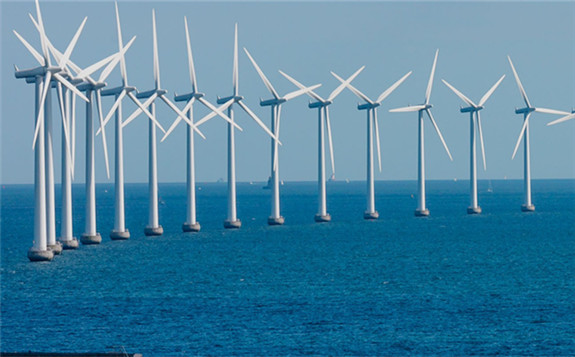 Business Network report highlights grid capacity as key area of concern for the sector
Business Network report highlights grid capacity as key area of concern for the sector The Leadership 100 report said that there are several areas for cooperation, in particular to overcome problems associated with grids and transmission lines needed to deliver offshore energy to homes.
The report was put together with the help of about 100 offshore wind experts from the US and abroad, and recommends steps the US industry, including elected officials in coastal states, must take to ensure global leadership on offshore wind.
Other challenges raised by the report include uncertainty within the supply chain, cost controls for ratepayers, and the limitation of certain infrastructure, such as ports.
The report focuses on the development of an industry roadmap, recommendations for offshore wind states on advancing grid and transmission projects and the launching of a public engagement campaign.
Network executive vice president Ross Tyler said much of the supply chain in offshore wind is international, with US projects and supply chains competing against Asia and Europe for resources.
An industry roadmap can help US developers and government entities identify the country’s supply chain capacity and its assets, strengths, gaps and resources.
The roadmap will also support regional port strategies and technical explanations for special scalable solutions, cooperation on workforce issues and insights on local supply chain development.
Tyler said current northeast grid capacity is about 4GW, but Massachusetts' is interested in delivering 1.6GW of offshore wind and New York up to 9GW.
States will need to build the infrastructure to allow gigawatts on the grid, he added.
The report said new models, including ground breaking and disruptive policy, should be explored to expand energy generation and transmission capacity.
“If the problem is not addressed soon, the offshore wind market could be held back, and policymakers’ clean energy targets may slip,” said Tyler.
“What’s necessary is communicating the risks of not acting on this issue and determining the benefits for congestion relief and ancillary services to incentivise state officials to build the infrastructure that allows gigawatts to be placed on the grid.”
States and the private sector should enter into constructive dialogue to discuss the grid/transmission strategy.
Once problems are resolved, overall costs can be lowered for ratepayers, the report said.
It said an updated Department of Energy study is needed for the northeast to inform the conversations with local, state and federal officials, while a public outreach campaign is also needed.
The latter campaign should focus on the positive impacts to the environment and the economy, as well as reductions to power costs compared with other energy sources.
“The public should be informed about the commercial benefit of offshore wind, jobs created for the area, how it will reduce the cost of power to ratepayers, as well as protect the environment,” the report said.
Business Network for Offshore Wind president and chief executive Liz Burdock (pictured) said: “From Massachusetts to Virginia, the US is on track to create an offshore wind energy marketplace exceeding 10GW by 2030.
“We need American intelligence and team building to build a homegrown offshore wind industry.
“States, such as Massachusetts New York and others, are working to build an industry to protect the environment, generate jobs, and provide affordable renewable energy. They are competing with other US states and, rightly so.
“But, states must also cooperate to minimise public costs, share resources and globalise what the US has to offer. Our report lays out a plan for making us a valuable energy renewable industry, not just for this country, but also for the entire world.”